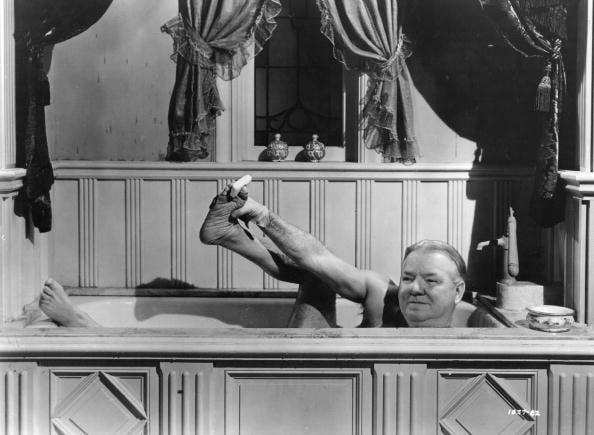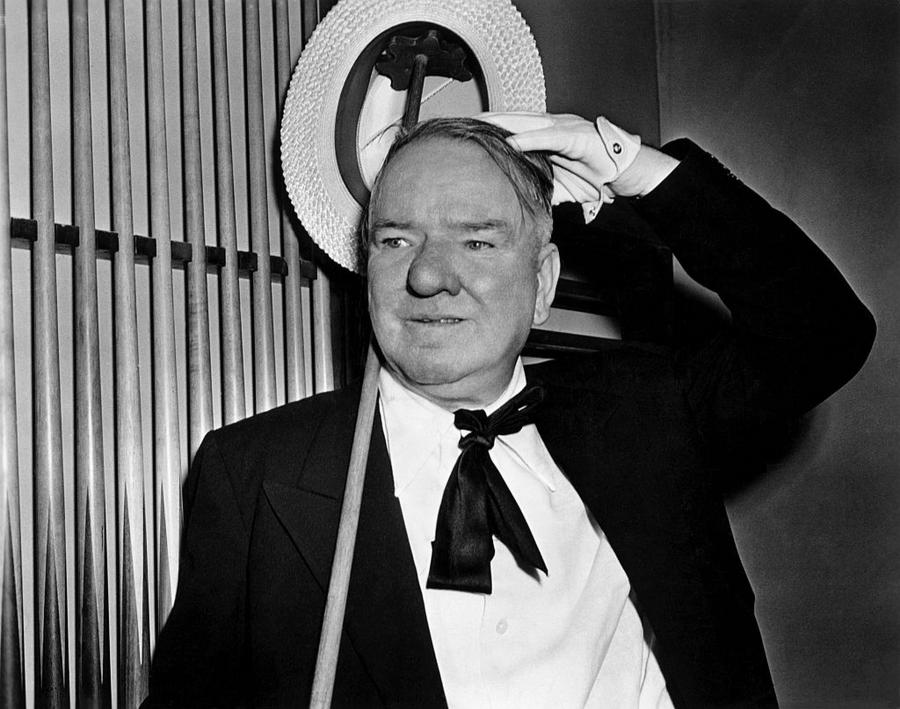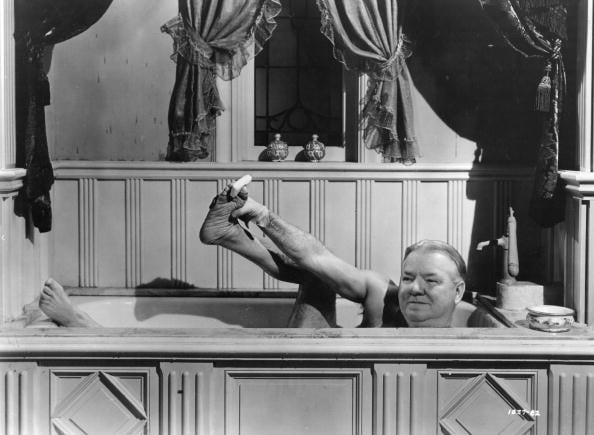/**/
What was W. C. Fields’ net worth?
W. C. Fields was an American comedian, actor, writer, and juggler who had a net worth equal to $100 thousand at the time of his death. After adjusting for inflation, that’s the same as around $1.6 million in today’s dollars.
W. C. Fields was born in Darby, Pennsylvania, in January 1880 and passed away in December 1946. He started his career in vaudeville and became popular as a silent juggler. He became a featured comedian in the Ziegfeld Follies and starred on Broadway in “Poppy.” Fields starred in several films, including “Pool Sharks,” “It’s the Old Army Game,” “So’s Your Old Man,” “Running Wild,” “Her Majesty, Love,” “If I Had a Million,” “The Barber Shop,” “Alice in Wonderland,” “David Copperfield,” “Man on the Flying Trapeze,” “You Can’t Cheat an Honest Man”, and many more. Fields received two stars on the Hollywood Walk of Fame in 1960 for Radio at 6316 Hollywood Blvd. and for Motion Picture at 7004 Hollywood Blvd. W. C. Fields passed away on December 25, 1946, at 66 years old, from an alcohol-related gastric hemorrhage.
“I spent half my money on gambling, alcohol, and wild women. The other half I wasted.“ – W. C. Fields
Early Life
William Claude Dukenfield, professionally known as W.C. Fields, was born on January 29, 1880 in Darby, Pennsylvania. His father, James Lydon Dukenfield (1841–1913), emigrated to the United States from England in 1854. James Dukenfield served in the American Civil War and was wounded in 1863. After marrying Fields’s mother, Kate Spangler Felton (1854–1925), he worked as an independent produce merchant and a part-time hotel keeper. Kate was a Protestant who was also of British ancestry.
W.C. Fields had a shaky relationship with his father. Beginning at age nine, he often ran away from home repeatedly. He did not receive a full primary school education and dropped out early on. At age twelve, he worked with his father selling produce. Unfortunately, this job was short-lived, as the two got in a fight, and Fields ran away from home yet again.
By the time he was a teenager, Fields had taken up an interest in juggling. A performance he witnessed at a local theater inspired him to practice the skill and make a job out of it. At 17 years old, he was performing a juggling act at church and theater shows.
Vaudeville
Fields wore a “scruffy beard and shabby tuxedo” in his first vaudeville performances, beginning in 1898. He claims to have been inspired by James Edward Harrigan, also known as the “Original Tramp Juggler.” To hide his stutter, Fields did not speak onstage.
In 1900, Fields changed his look and billed himself as “The Eccentric Juggler.” He wanted to make a new name for himself and not be grouped with the many “tramp” acts in vaudeville at the time. By the early 1900s, he was named the world’s greatest juggler by his fans.

Getty
Broadway
In 1905, Fields made his Broadway debut in “The Ham Tree.” In the play, he was required to speak, which he had never done onstage. He agreed happily in order to move forward in his career.
He continued touring in vaudeville on the side until 1915. Beginning in 1915, he appeared on Broadway in Florenz Ziegfeld’s “Ziegfeld Follies.” He gained critical acclaim for his act, so Fields officially left vaudeville and starred in the “Follies” from 1916 to 1922.
Fields changed his look yet again in 1915. However, this would be the look that he would maintain until the end of his career. His outfit: a top hat, cut-away coat and collar, and a cane.
Copyright Work
When Fields started to become successful in his comedic work, he became highly protective of the “intellectual properties” that he felt defined his persona as a performer. In vaudeville, burlesque, and motion picture industries, performers and comedy writers often copied or “borrowed” sketches and routines from other industry workers. When Fields became well-known, his material was borrowed very often.
In 1918, Fields began to combat this by registering his sketches and other comedy material with the Copyright Office of the Library of Congress in Washington, D.C. Nevertheless, performers continued to use his material. Fields had become so fed up by 1919 that he felt “compelled” to place an official, legal warning in the June 13 issue of Variety. Addressed to “Nibblers” and “indiscreet burlesque and picture players,” his notice cautioned fellow performers that all of his “acts (and businesses therein) are protected by United States and International copyright,” stressing that he and his attorneys would “vigorously prosecute all offenders in the future.”
Between 1918 and 1930, Fields received 20 copyrights covering 16 of his most important sketches. Fields biographer Simon Louvish described the protection of his material t as the “bedrock” upon which he built his stage career. Because no performer could take his material, he became a trademark. Fans could only get that type of comedy from Fields himself.

Getty
Personal Life
On April 8, 1900, Fields married a fellow vaudevillian chorus girl, Harriet “Hattie” Hughes (1879–1963). Hattie was educated and knew how to read. Upon Fields’s request, she would tutor her husband in reading and writing during their travels. As a result, he became an enthusiastic reader. He traveled with a trunk of books, translations of Homer and Ovid, and works by authors ranging from Shakespeare to Dickens. The couple had a son, William Claude Fields Jr. (1904–1971).
In 1904 Fields’s father visited him for two months in England while he was performing there in music halls. Fields helped his father retire, purchased him a summer home, and encouraged his parents and siblings to learn to read and write so they could communicate with him by letter.
By 1907, Fields and Hattie had separated. She wanted him to stop touring and settle into a stable position, but he was unwilling to give up show business. They never divorced. Fields continued to correspond with Hattie (mostly through letters) and voluntarily sent her a weekly stipend until his death.
In 1916, Fields met Ziegfeld Follies performer Bessie Poole, and the two started dating but never married. With her, he had another son named William Rexford Fields Morris (1917–2014). Neither Fields nor Poole wanted to give up the touring lifestyle to raise William. As a result, their child was placed in foster care and ended up going to a couple who were Bessie’s acquaintances. The couple had no child and had been trying for years. The two split up in 1926. Poole died of complications of alcoholism in October 1928, and Fields contributed to their son’s support until he was 19 years old.
Fields met Carlotta Monti (1907–1993) in 1933, and the two began an off-and-on relationship that lasted until he died in 1946. Monti wrote a memoir, “W. C. Fields and Me,” which was made into a film at Universal Studios in 1976.
W. C. Fields passed away on December 25, 1946, at 66 years old, from an alcohol-related gastric hemorrhage.
/**/
Read More: World News | Entertainment News | Celeb News
Celebrity Net Worth




